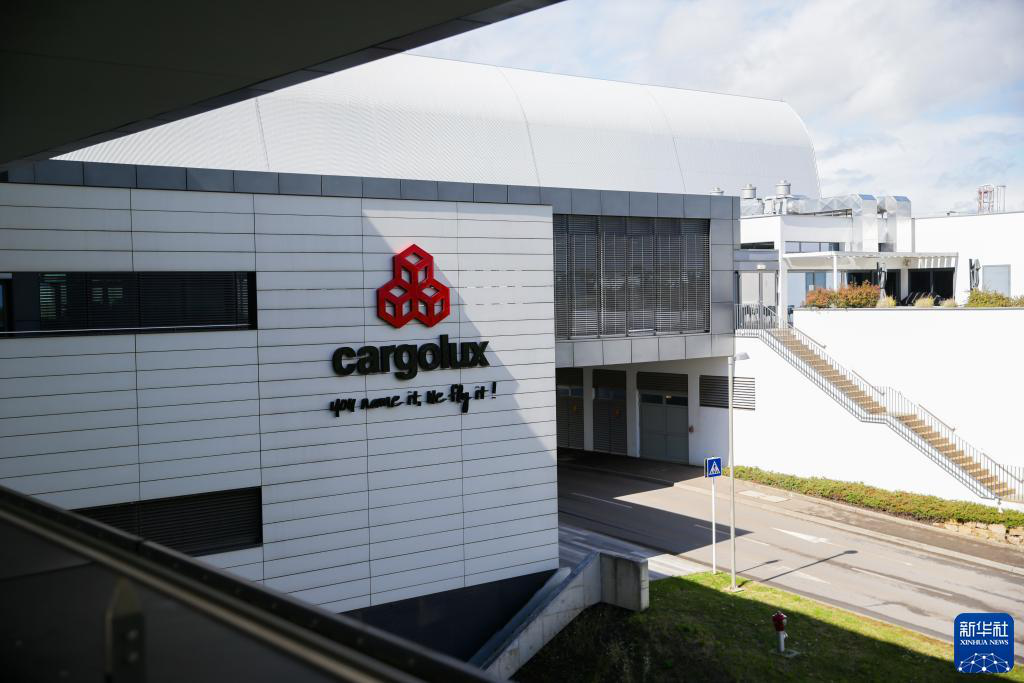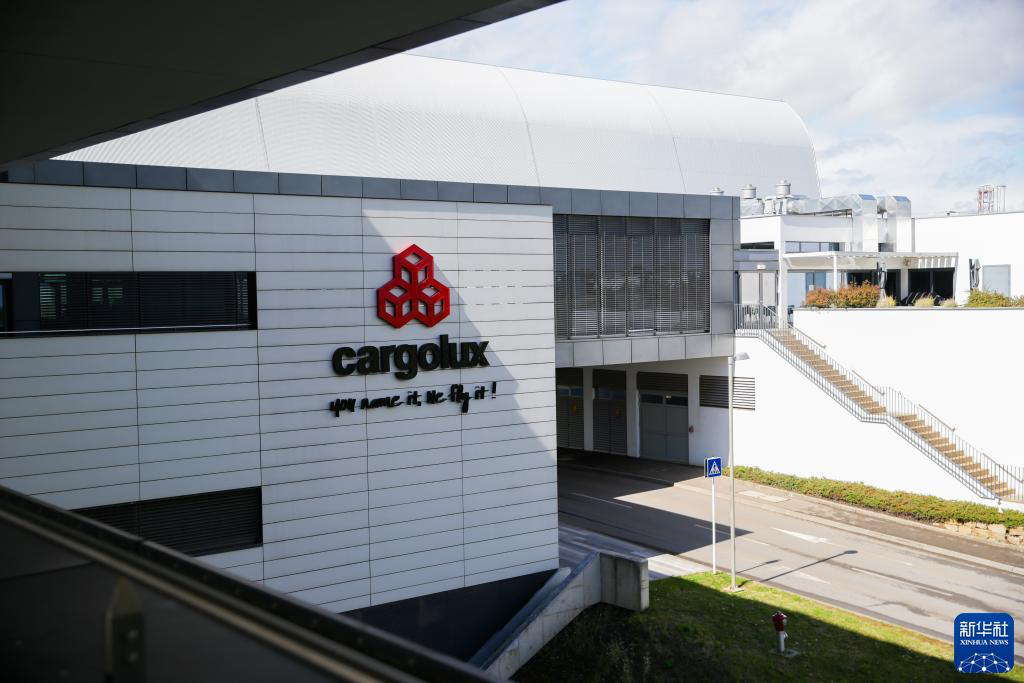
Photo taken on August 1, 2023 shows the headquarter of the Cargolux in Luxembourg. (Xinhua/Zheng Huansong)
BEIJING, Aug. 10 (Xinhua) -- At 2 o'clock in the morning, Chen Pengchao, operation officer at Cargolux Zhengzhou hub, started his daily work of sending and receiving flights.
While checking the cargo information, Chen introduced that the flight came from Luxembourg to Zhengzhou, capital city of central China's Henan Province. After two-hour of unloading and reloading, it will head for Chicago in the United States.
The Zhengzhou-Luxembourg route started to build in 2014 when Henan Civil Aviation Development and Investment Group (HNCA) acquired a 35 percent stake in Cargolux Airlines International. After years of development, a total of 15 flights are now operated weekly, connecting Zhengzhou with 15 foreign destinations including London, Milan and Chicago.
-- Cargolux and China
The Luxembourg-based Cargolux has seen rapid-growing revenue and profit thanks to the Chinese market. Data from Cargolux showed that the cargo throughput of its Zhengzhou route in 2017 was 10 times of that in 2014. The company got out of the red and secured a net profit of 122 million U.S. dollars in the same year, ranking up from the ninth to the fifth among all cargo airlines globally.
In 2022, the carrier raked in a revenue of 5.1 billion U.S. dollars and a net profit of 1.6 billion U.S. dollars, a record high in the company's history.
In June, a group of senior executives at Cargolux and its professional managers in the Asia-Pacific region attended a meeting in Zhengzhou. It was the first meeting the carrier held in the region after the COVID-19 pandemic, showing its confidence in the dual-hub strategy and future business growth potential in China.
Richard Forson, president and CEO of Cargolux, said that Zhengzhou serves as a second home for Cargolux, so that Cargolux staff, executives and regional managers alike, need to know and become better acquainted with the city.
The Asia-Pacific market serves as an important growth engine for Cargolux's business as it now has 19 stopovers in Asia, among which the Zhengzhou route covers eight.
-- A chance for Zhengzhou
"The Air Silk Road has helped strengthen the status of Henan as a transportation hub of inland China. It has made an important contribution to trade growth between China and Europe, and promoted commercial exchanges," said Song Jingwu, vice-president of the China-EU Association.
Zhengzhou Airport has equipped with digitalization tools to accelerate clearance efficiency at the customs. According to an official at the Zhengzhou Airport customs, a full-chain digitalization has been achieved in the Zhengzhou customs, with QR code and intelligent locks enabling quick pass at checkpoints. The airport also created a non-invasion inspection mode for high value-added vacuum packing products, such as chips, integrated circuits, and precision instruments, in its 7/24 one-stop services.
Zhengzhou's industries have thrived thanks to its developed transportation network featuring a one-hour intercity railway metropolitan area, a 300-kilometer expressway coverage area, an 800-kilometer high-speed railway area, and an aviation network covering major global economies. Taking these advantages, it has laid out industrial clusters for industries relying on the aviation industry, such as intelligent terminals, precision machinery, and biomedicine. In 2022, the output value of electronic information industry in the Zhengzhou Airport Economic Comprehensive Experimental Zone exceeded 500 billion yuan (about 69.35 billion U.S. dollars).
-- Greener operation
The Zhengzhou-Luxembourg Air Silk Road is on the path to greener operations. In June, a Boeing B747 freighter operated by Cargolux departed from Zhengzhou to Luxembourg. It was the first cargo flight operating between the two countries that used sustainable aviation fuel (SAF) provided by China National Aviation Fuel Group Limited (CNAF).
Claude Zehren, executive vice president for flight operations of Cargolux, said that the company has invested projects producing the second generation and the third generation aviation fuel.
As a low-carbon alternative for traditional aviation fuel, SAF is produced with waste animal and vegetable fats, oils, urban household waste, and agricultural and forestry waste, remarkably reducing carbon dioxide emissions.
Based on the analysis of the International Air Transport Association, 65 percent of civil aviation carbon emission reductions are expected to be achieved by using SAF by 2050.
HNCA has been seeking cooperation with SAF industry to promote greener operation of the Zhengzhou-Luxembourg flights operation. Meanwhile, it is also exploring collaboration with Luxembourg-based financial institutions to mobilize green investment into the industry, said Zhang Mingchao, Chairman of the Board of HNCA.
(Edited by Li Shimeng with Xinhua Silk Road, lishimeng@xinhua.org)




 A single purchase
A single purchase









